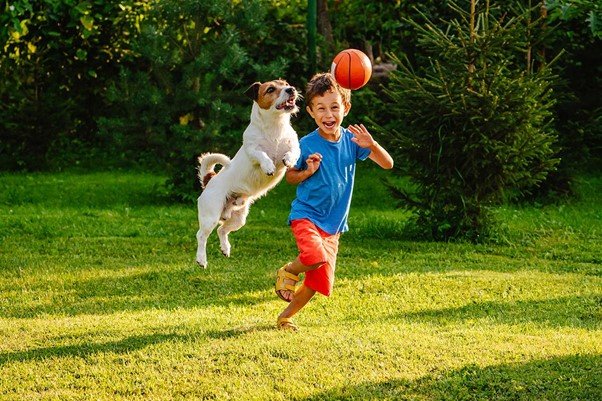The Counterintuitive Secret to Improving Your Child's Attention Span (And the Two Types of Attention)
The lower attention span of children nowadays has become a cause for alarm for many parents. A simple, albeit counterintuitive, method can help stave off this concern.
I was having a Zoom coffee catch up with a friend this week, and our conversation turned towards our kids and their attention spans.
My friend joked that her son had the attention span of a goldfish, to which I replied that my kid's attention span was that of a gnat. Of course, we both chuckled about it. But this conversation reminded me of a common concern of many parents who I work with
It's not unusual for parents to worry about their children's attention spans, especially when it comes to how they perform at school. This gets worse during lockdown and also near the end of school terms where children are known to pay less attention to their work.
If you share these worries as a parent, you may have thought about what you can do to help increase your child's attention span.
And since this is an issue that troubles parents worldwide, it's no wonder there are various theories on the subject. But there is a relatively simple secret that many may have overlooked.
In this article, you'll learn about a counterintuitive way that may improve your child's attention span, in addition to the two types of attention that can shed more light on the matter.
The Secret - Let Your Kids Goof Off
Goofing off, or slacking off, as we would say in Australia, can instantly create a shift from directed attention to the other type - free-form attention. And these two types of attention are something that we will discuss in detail later.
Keep in mind that it’s not enough to just let your child goof off at random. This activity has different forms, with some that are more helpful than others.
Constructive slacking off, in particular, can positively affect the brain and reinforce parenting techniques that emphasise the child's strengths. This desirable form of down time is always active in the sense that it creates self-generated mental engagement. Simultaneously, it provides plenty of freedom.
This active behaviour can be much more nurturing for your child's attention span than always feeding their mind with various stimuli or letting them veg out for too long on their device
If you want to encourage your child to slack off constructively, it’d be best to choose an activity that plays to their strengths. Now, there are many activities that don't require constant attention where your child can get into a zone. Some good examples would be reading, listening to music, art, knitting, juggling, shooting baskets, cooking, and daydreaming.
These good goofing off activities bridge direct attention and mindfulness, with one representing an extreme focus on a specific action and the other a state of free-form attention on one's own thoughts. In essence, it acts as a form of rest that can allow your child to pay greater attention later on.
The concept of free-form attention as rest is why the method might seem counterintuitive to some. While your child is still being active, their brain doesn’t have to be too focused, which means it gets to rest and refresh. This kind of ‘constructive rest’ actually helps improve their attentive powers.
According to research, the brain remains very active during these activities, even though it's perceived as a resting state. Due to this, I think of free-form as a type of deliberate rest.
Our brains register events around us with a small lag of around 300 milliseconds. However, studies show that this measurement improves after taking a quick break.
For example, when your child has plenty of homework, you can have them take regular breaks to refresh, preferably with an enjoyable physical activity. This switch between active focus and slacking off can be remarkably effective.
Just like a computer with too many programs running, the brain can get overwhelmed by too much input. This is why downtime can be helpful. Deliberate rest is useful for our mind to sort information, consolidate, and free up resources.
The Two Types of Attention
We don't always use the same type of attention for every action performed. Instead, we toggle between directed and free-form attention according to the specific activities.
Directed Attention
When we consciously focus on something, we're engaging in the process of directed attention. This is a deliberate, conscious type of attention that is typically task-oriented with a top-down structure.
To illustrate, imagine your brain as a CEO and your neurons as employees. In this scenario, the CEO directs the employees to perform a task.
There are two dimensions to directed attention. One is direction, while the other's maintenance. I call these dimensions 'aim and sustain’. When we dedicate attention to an idea, task, or challenge, it allows us to gain focus. Keeping that focus is where the maintenance dimension comes in.
Since directed attention is deliberate, it requires a certain amount of effort.
When your child is studying or doing homework, for example, they must screen out all distractions, such as the TV in another room. After a while, the effort becomes too much and their brain gets distracted.
Free-Form Attention
Free-form attention is what happens when our mind simply wanders. It’s the mode your brain goes into when it does not have a particular task at hand. This is an undirected type of attention that functions from the bottom up, in contrast to directed attention.
The wandering mind can produce ideas, insights, and solutions to problems through a process we have yet to understand.
Now, the relationship between our mind and free-form attention is the same as the one between our body and sleep. When we engage in such so-called 'downtime', we allow our mind to renew and regain strength.
In strength-based parenting, ensuring kids have the unstructured time in their week for free-form attention is essential. Yet, social pressure makes incorporating downtime in our children's day somewhat challenging. If you’re in lockdown (like I am right now), we have the opposite problem and we need to find ways to create more structure in the week.
Down Time Can Improve Attention
Free time and goofing off are among children’s most important resources when it comes to developing and strengthening their attention span. When your child engages in downtime, they aren't showing a lack of attention. Instead, crucial processes are going in the recesses of their mind.
The brain never stops processing information. It's always going through the input received, sorting, integrating, and committing it to memory.
And a significant part of this process goes on when children are slacking off. That's why downtime plays a substantial role in building their attention span as well as forming their identity.
To learn more about how you can help your child improve their attention span, join my Strength Switch - Online Positive Family Program.

